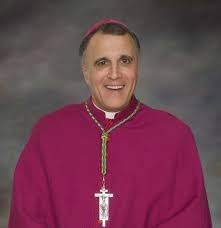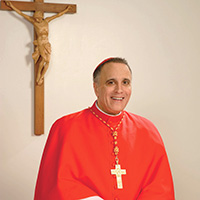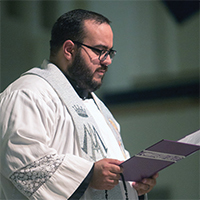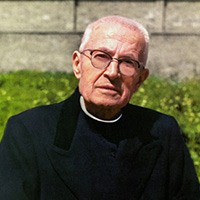The New Testament presents Christ as the new High Priest, offering the perfect sacrifice
to the Father. Though not explicitly stated, there are also many allusions in the New Testament to Mary as the Ark of the Covenant, a connection that was made explicit in the writings of the early Church. In this schema, drawing from the ritual practices of ancient Israel, is there room for St. Joseph? I think there is. If Jesus is the High Priest of the New Covenant and Mary is the Ark, I believe St. Joseph is the Levite.
Let me first say that, unlike the identification of Jesus as the High Priest and Mary as the Ark, the idea of St. Joseph as the Levite does not have widely recognized Scriptural underpinnings, nor am I aware of any other writers who make the connection. But from what little Scripture does say about St. Joseph, I think we can see a connection to the Levites of the Old Covenant.
Who were the Levites? The Levites were one of the twelve tribes of Israel. The tribe of Levi was unique in that all the ministers of the Tabernacle, and later the Temple, were of the tribe of Levi. Those descended from Levi’s great-great-grandson Aaron were the priests who offered sacrifice. The descendants of Levi who were not descended from Aaron functioned as Levites. The Levites did not offer sacrifice but had other roles, including carrying the Ark of the Covenant (1 Chronicles 15:2) and custody of the items used for worship (Numbers 1:50-53). They are described as being given to the priest to assist them (Numbers 8:19). The Levites also helped prepare the sacrifices, in particular the Passover lambs (2 Chronicles 35:11) and the showbread (1 Chronicles 9:31).
From this, we can begin to see a connection to St. Joseph. Just as the Levites were tasked with assisting the priests in the Temple and caring for the Ark of the Covenant, so St. Joseph was charged with serving the new High Priest and the new Ark, Jesus, and Mary. As the Levites helped prepare the sacrifices, Joseph helped Jesus, the Lamb of God, and Bread of Life, to prepare for His supreme sacrifice. St. Luke hints at this when he says that Christ was obedient to Joseph and Mary and so grew in wisdom, stature, and favor (Luke 2:51-52). St. Joseph’s teaching and example were part of Jesus’s preparation for His mission.
Seeing Joseph as the new Levite also helps us understand his marital continence. In the Old Testament, sexual relations, even between a husband and wife, rendered them ritually impure (Leviticus 15:16-18). It should be noted that ritual impurity is distinct from moral impurity. Sex between a married couple was not considered morally sinful, but it did make them ritually impure. For most people, being in a state of ritual purity had no bearing on their daily lives. However, priests and Levites were required to be ritually pure while fulfilling their duties. The priests and Levites were divided into groups that took turns throughout the year, and during their service, they were required to maintain ritual purity, which included sexual continence. If Joseph is the Levite tasked with serving the High Priest and the New Ark, then his service lasted not simply for two weeklong terms each year but from the time he took Mary into his home until his death. As such, we can understand his maintaining sexual continence so as to be ritually pure.
Understanding St. Joseph in the context of a Levite also shines a light on common the priesthood of the faithful. As the Catechism states, all of the faithful share in the priesthood of Christ. St. Joseph was not a Levite by genealogy. He was descended of King David and of the Tribe of Judah. In fact, Joseph’s fear of taking Mary as his wife echoes David’s fear of bringing the Ark into Jerusalem (2 Samuel 6:9). Yet, St. Joseph fulfilled a priestly role. He did not do this by serving liturgically in the Temple but in the course of his daily life. In his role as a husband, father, and worker, St. Joseph also fulfilled his role as the Levite of the New Covenant. Likewise, the members of the lay faithful participate in the priesthood of Christ in the midst of their daily lives. We serve Christ and prepare the parts of our lives so that they can be united to His perfect sacrifice, just as the Levites served the priests and prepared the sacrifices for them.
Seeing St. Joseph as the Levite of the New Covenant also provides greater depth to his role in salvation history. He was not only there to provide for the material needs of Mary and Jesus. He had a sacred duty, one which is ultimately tied to Christ’s role as the new High Priest. As we draw closer to St. Joseph, he helps us to see how our daily lives also cooperate in the sacrifice of Jesus.
~Fr. Dotson
St Charles Borromeo
St Charles, MO










 Kimberly Kay Cox
Kimberly Kay Cox







 Mark Mogilka
Mark Mogilka





























 Armando Cervantes
Armando Cervantes Anna Betancourt
Anna Betancourt
 Andrea Chavez-Kopp
Andrea Chavez-Kopp